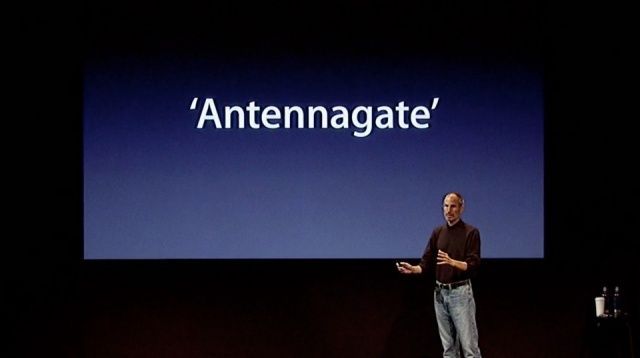 March 29, 2012: Apple settles its “Antennagate” controversy by giving affected iPhone 4 owners the chance to claim a whopping $15 payout. The settlement covers customers who experienced problems with the phone dropping calls due to its cutting-edge design, but were unable to return their handsets (or didn’t want a free bumper from Apple to mitigate against the problem).
March 29, 2012: Apple settles its “Antennagate” controversy by giving affected iPhone 4 owners the chance to claim a whopping $15 payout. The settlement covers customers who experienced problems with the phone dropping calls due to its cutting-edge design, but were unable to return their handsets (or didn’t want a free bumper from Apple to mitigate against the problem).
While it’s arguable whether a $15 payout was worth filing all the paperwork necessary to claim the cash, the Antennagate story — and the resulting class-action lawsuit — generated big headlines at the time.
Antennagate: A uniquely Apple controversy
“Antennagate” referred to the tendency of the iPhone 4 to occasionally drop calls when held a certain way. The problem proved particularly vexing when a user held the phone in their left hand so that their palm covered the device’s tiny antenna gap.
A bit like 2014’s “Bendgate” controversy with the iPhone 6 Plus, Antennagate was massively overblown by the media. The antenna problem affected only around one call in a hundred.
However, things came to a head when respected trade publication Consumer Reports said it could not recommend the iPhone 4 because of the defect. In the aftermath, Apple CEO Steve Jobs flew back early from a family holiday in Kona Village, Hawaii, to address the problem at a press conference. (Apple’s initial response to annoyed iPhone 4 owners basically boiled down to “you’re holding it wrong.”)
By being honest about the antenna problem, but standing by the iPhone 4, Jobs defused the situation. Antennagate failed to prompt the mass iPhone returns some feared. Nonetheless, Antennagate remains a significant moment in Apple history for several reasons.
Apple design: Form over function?
For starters, it marked one of the first times that Apple’s design-first approach to technology clashed with creating a product that “just worked.”
Metal is not the ideal material to place next to an antenna. A design like the iPhone 4’s can create a Faraday cage that stops signals from getting in or out of the phone.
The original iPhone got around this by using a plastic band at the bottom. However, for the iPhone 4, Apple design chief Jony Ive wanted to replace the plastic for aesthetic reasons. The design brilliance of Apple’s engineers made this possible. However, some argued that their solution illustrated the danger of putting form before practical function. (Some people continue to lodge that same accusation against Apple these days.)
Antennagate settlement and controversy illustrates how far iPhone had come
The other thing Antennagate highlighted was just how big Apple had become. By the time of the iPhone 4 release in 2010, Apple had transitioned from the money-losing company it was in the 1990s to become one of the most valuable businesses in the world.
A lost iPhone 4 prototype that wound up in the hands of Gizmodo in April 2010 generated headlines prior to the device’s unveiling by Steve Jobs on June 7, 2010. When the iPhone 4 went on sale, Apple clocked a record-setting (for the time) 600,000 preorders on launch day.
In other words, the iPhone and Apple were pretty big deals by that time. And what wouldn’t have been news for a lesser company became a major story for the much-scrutinized Apple.
Do you remember Apple’s Antennagate drama and the resulting settlement? Did you own an iPhone 4? And, if so, did the antenna problem affect your usage of the handset? Leave your comments below.


